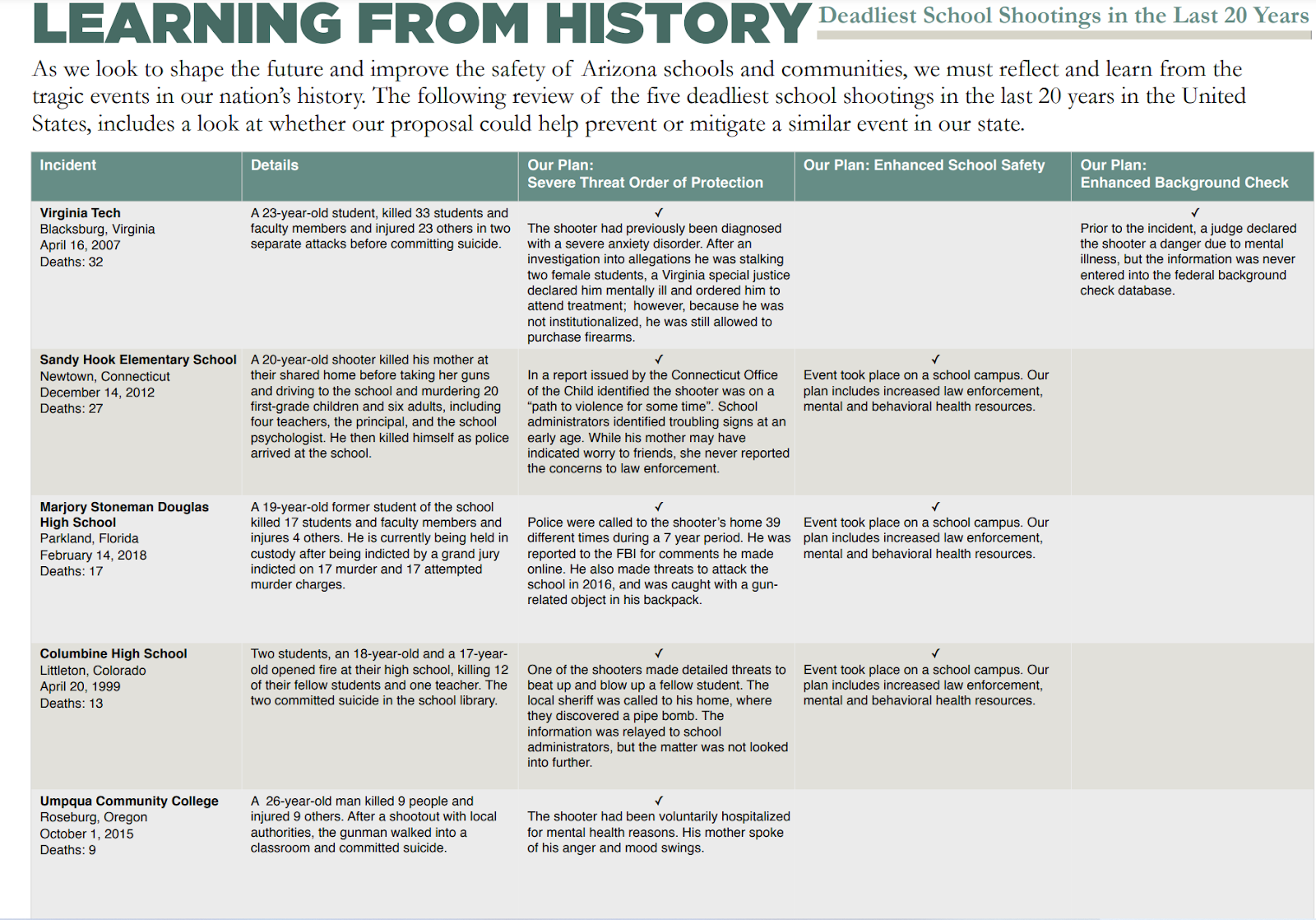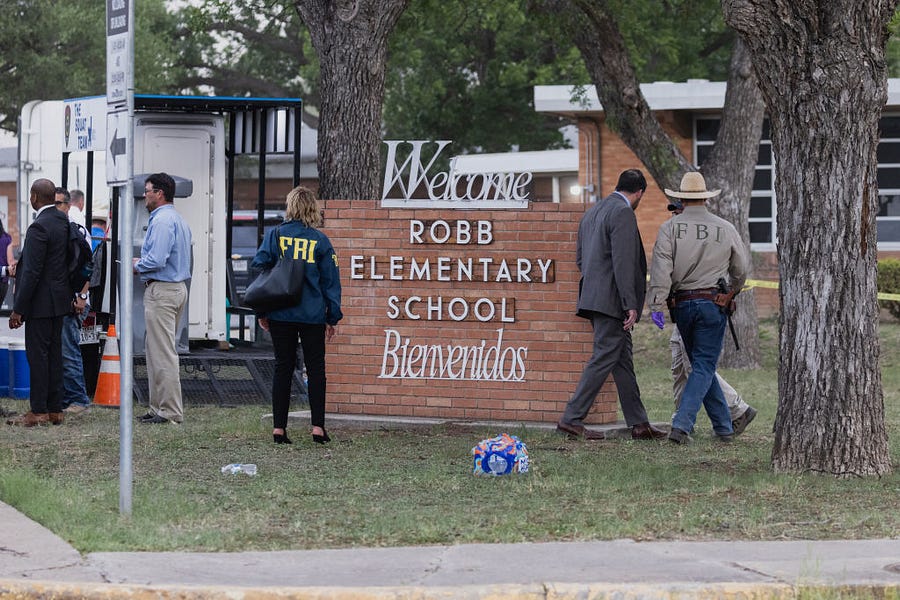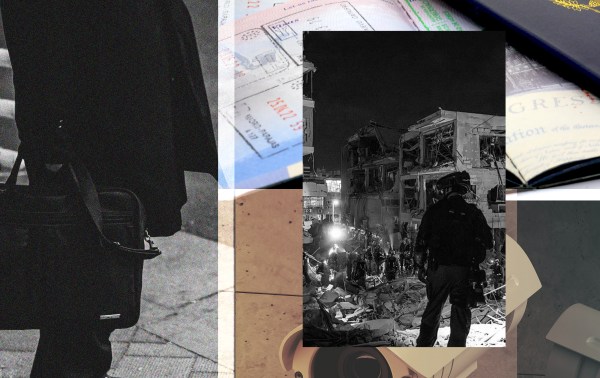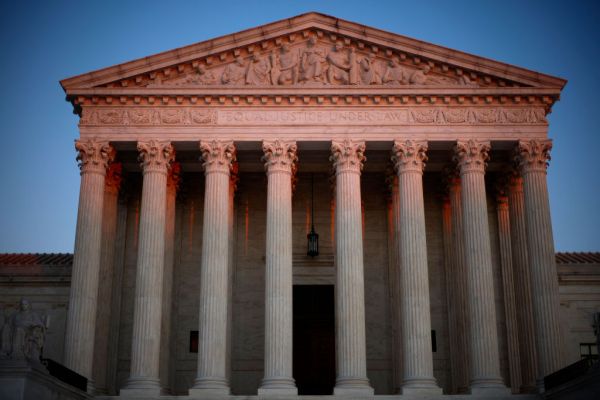I was intending to write about the Georgia Republican primary, but then—just as I was walking back to my hotel—I saw the horrific news out of Uvalde, Texas. Another school shooting. Another elementary school. This time at least 18 children are dead, along with three adults. God have mercy on our broken nation and redeem our broken culture.
I’m definitely not a person to denigrate “thoughts and prayers.” I believe prayer is powerful and effective. We should pray for the victims and their families. Pray for comfort. They are enduring unimaginable pain. Pray for those who treat them and care for them. But we also need to pray for wisdom, because there are things we must do to protect our children from this awful scourge.
And that’s why I’m writing about red flag laws.
To understand the need for red flag laws, it’s important to back up and understand the different categories of American gun deaths and the tools we have to defeat gun violence. The first category is what one might call common crime. Think of gang violence. Think of domestic violence. The majority of our meaningful gun control laws are aimed at common crime. We prohibit felons from possessing guns. We prevent “straw” purchases (when one person buys for someone who’s legally prohibited from owning a gun). We escalate punishment when criminals use guns to commit crimes.
But our nation’s gun control laws are much less effective at addressing the next two categories of gun deaths—suicides and mass killings. Enormous numbers of otherwise law-abiding citizens die by suicide using guns in this country. These are people who could pass any background check. And forms of gun control aimed at limiting a weapon’s lethality (such as restrictions on magazine size) are irrelevant to the suicide crisis. This is where our nation’s strained mental health system most shows its flaws.
Mass killings are their own thing. Mass shooters are frequently law-abiding, right up until the moment when they commit mass murder. Mass shootings are often meticulously planned, which means that they can circumvent common gun control laws. For example, the Buffalo shooter legally purchased the weapon he used and then illegally modified it to make it more lethal.
So when we talk about common gun control proposals after mass shootings—whether we’re referring to expanded background checks, assault weapons bans, or limits on magazine capacity—the general rule is that none of those measures, even if implemented, would have actually prevented any recent mass shooting.
In 2015 the Washington Post’s Glenn Kessler famously fact-checked Marco Rubio’s assertion that assault weapons bans and magazine limits would not have prevented any then-recent mass shooting and found it to be true. Here was Kessler:
This is certainly a depressing chronicle of death and tragedy. But Rubio’s statement stands up to scrutiny — at least for the recent past, as he framed it. Notably, three of the mass shootings took place in California, which already has strong gun laws including a ban on certain weapons and high-capacity magazines.
Gun-control advocates often point to the experience in other countries that have enacted gun laws that heavily restrict gun ownership; as we have shown, quantitative measures of cross-comparative crime statistics, especially where the crime is not consistently defined (i.e., “mass shooting”), usually end up being apples-to-oranges comparisons. It is possible that some gun-control proposals, such as a ban on large-capacity magazines, would reduce the number of dead in a future shooting, though the evidence for that is heavily disputed. But Rubio was speaking in the past, about specific incidents. He earns a rare Geppetto Checkmark.
But since Kessler’s fact check, a new idea has emerged, one that’s directly designed to address both gaps in our mental health system and is tied to patterns we’ve seen in mass shootings. It’s the red flag law. It goes by other names, including extreme risk protection order, gun violence restraining order, or severe threat order of protection.
The idea is simple—if a person exhibits behavior indicating that they might be a threat to themselves or others (such as suicidal ideation or violent fantasies), a member of his family, a school official, or a police officer can go to court to secure an order that permits police to seize his weapons and prohibit him from purchasing any additional weapons so long as the order lasts.
A well-drafted red flag law should contain abundant procedural safeguards, including imposing a burden of proof on the petitioner, hearing requirements, and a default expiration date unless the order is renewed through a clear showing of continued need. But its potential effectiveness (unlike the gun control measures Kessler analyzed in 2015) is crystal clear.
In 2018—after the horrific school shooting in Parkland, Florida, Arizona Gov. Doug Ducey proposed a comprehensive safe schools program that incorporated a series of measures that were based on careful analysis of each and every significant school shooting since Columbine. I’d urge you to read the entire document. Ducey proposed enhanced background checks, an increased security presence at schools, and increased mental health resources. He also proposed a red flag law, and to support that proposal he included this chart (which may be easier to read here):

Note that in every one of the deadliest school shootings, the shooter exhibited behavior before the shooting that could have triggered a well-drafted red flag law.
But it’s not enough just to pass a red flag law. We have to educate citizens and police about their existence and scope. Laws don’t enforce themselves. Tragically, it appears that New York’s red flag law could have stopped the Buffalo mass shooting. My friend Stephen Gutowski explained last week in The Dispatch:
The alleged shooter expressed a general desire in a school assignment to kill himself and others in June 2021. As a result, he was taken by police for a psychological evaluation and spent a day and a half in a mental hospital, according to NPR.
However, he was released and no further action was taken.
If either the police, school administrators, or his parents had filed for an ERPO, the shooter likely would have been prohibited from buying the gun he used in his attack. The shooter’s clear willingness to break dozens of laws, including by illegally modifying his gun, implies he may have been willing to buy a gun illegally even if subject to an ERPO. But making his acquisition of a gun more difficult very well could have prevented the attack.
Currently 19 states and Washington, D.C., have some form of red flag law on the books. Florida is the only red state. That needs to change.
I know the objections. I know that red flag laws implicate a core constitutional right. I also know that poorly drafted laws are subject to abuse. But our constitutional structure permits emergency and temporary deprivations of even core liberty interests upon sufficient showing of need, with sufficient due process. Restraining orders and other forms of domestic violence prevention orders can often block parents and spouses even from their own families upon a showing of imminent threat.
I don’t yet know the identity, history, or motivations of the Uvalde shooter. A red flag law may not have helped, but this dreadful moment should remind us of all the dreadful moments that came before. It should remind us that there is a policy that can save lives. Dear legislatures, pass red flag laws. Now. Give families and police a chance to remove guns from the people who tell us they’re dangerous.
One last thing …
Last week I joined Gutowski on his excellent Reload podcast. We talked about red flag laws and assault weapons ban. Here’s an excerpt where I drill down on the core purpose of the law and how it fills a hole in our system. I’d love to hear your thoughts:







Please note that we at The Dispatch hold ourselves, our work, and our commenters to a higher standard than other places on the internet. We welcome comments that foster genuine debate or discussion—including comments critical of us or our work—but responses that include ad hominem attacks on fellow Dispatch members or are intended to stoke fear and anger may be moderated.
With your membership, you only have the ability to comment on The Morning Dispatch articles. Consider upgrading to join the conversation everywhere.